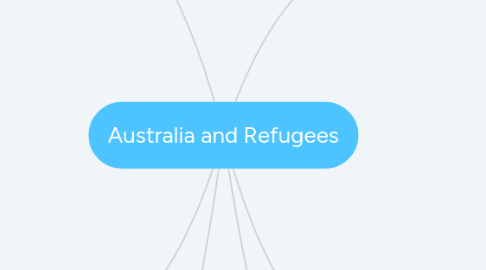
1. Curriculum links
1.1. History: Levels 5 & 6
1.1.1. Historical knowledge: Content descriptor: The stories and perspectives of people who migrated to Australia, including from one Asian country, and the reasons they migrated (VCHHK095) (VCAA, 2019)
1.1.1.1. Elaborations; - investigate migration programs to Australian since World War II - comparing push and pull factors that have contributed to people migrating to Australia, for example, economic migrants and political refugees - describing cultural practices related to family life, beliefs and customs of newly-arrived migrant groups and comparing these with those of the communities in which they settled within Australia - connecting stories of migration to students’ own family histories (where appropriate) (VCAA, 2019)
1.1.2. Year level descriptor: In Levels 5 and 6, students examine significant events and people, political and economic developments, social structures, and settlement patterns. Students learn about the way of life of people who migrated to Australia and their contributions to Australia’s economic and social development. Key questions: Who were the people who came to Australia? Why did they come? (VCAA, 2019)
1.2. Geography: Levels 5 & 6
1.2.1. Geographical knowledge: Content descriptor: Australia’s connections with other countries and how these change people and places (VCGGK098)
1.2.1.1. Elaboration: - researching connections between Australia and countries in the Asia region, for example, through trade, migration, tourism, aid, education, defence or cultural influences; and explaining the effects of at least one of these connections on their own place and another place in Australia
2. Connections to Catholic Social Teachings
2.1. Solidarity
2.1.1. The catholic social teaching principle of 'solidarity' is the idea that as humans we are one big global family and should treat each other as such. It focuses on striving for justice and peace for all. In regards to the issue of refugees this principle would suggests that as global citizens it is our responsibility to provide these individuals with justice and peace by supporting them in escaping conflict and giving them a fair chance to join our communities (Diocese of Camden, 2019).
2.2. Options for the Poor and Vulnerable
2.2.1. The catholic social teaching principle of ‘Option for the poor and vulnerable’ as stated in its title promotes the importance of supporting those in need. It instructs individuals to put the needs of others in particular vulnerable individuals above their own. As refugees are some of the most vulnerable people on the globe this catholic social teaching principle applies directly to them. If this principle was followed in this area of concern it would again encourage nations and communities to take refugees in, providing them with the basic necessities of food, water and shelter, rather than denying them access into our country (Diocese of Camden, 2019).
2.3. Life and Dignity of the Human Person
2.3.1. The catholic social teaching principle of ‘Life and Dignity of the Human Person’ places the value of human life above everything else. As a result it promotes the preservation of human life. In regards to the current issue of refugees and asylum seekers this principle lays in support of the reception of refugees in order to preserve human life allowing individuals to flee conflict and danger. It also calls us to avoid and stop war in order that less individuals are harmed and need to leave their homes for this reason (Diocese of Camden, 2019).
3. Importance of the problem
3.1. We are constantly faced with stories about refugees and asylum seekers in the media, headings such as “Government to ban boat people forever” (The Chronicle, 2016) and “Asylum seekers need compassion” (Copland, 2012) are plastered over our screens and newspapers. But how great a concern is it really. The United Nations published a list of the 22 of the world’s greatest problems globally, refugees made the list. There are an estimated 30 million refugees on earth and an additional 40.8 million asylum seekers (UN, 2019). That is roughly 70.8 million people who have left their nation of birth due to conflict, poverty, persecution and even global warming.
4. Age appropriateness of problem
4.1. The topic of refugees closely links with the concept of migration which is explored throughout the year 5 and 6 Victorian curriculum, within a range of subject areas. While some of the reasons individuals seek asylum in Australia may be inappropriate to look at in detail with the students, the exploration of this topic allows students to engage with a new perspective. Therefore, refugees and Australia’s relationship with refugees provides a new outlet to explore the curriculum through and is age appropriate for students in grades 5 and 6 when a teacher carefully considers their students background and the content they are being exposed to.
5. Inquiry approach implimented
5.1. How I will implement the five E's of inquiry Engage: Questioning and prior knowledge Explore: Research using a range of sources Explain: Present learning and findings Elaborate: ideas for further investigation Evaluate: Reflection on process and learning
6. Possible sources
6.1. Primary sources
6.1.1. blog or diary of refugee
6.1.2. Interview with an immigrant
6.2. Secondary sources
6.2.1. immigration museum
6.2.2. websites about refugees
6.2.3. books about assylum seekers
6.2.4. newspaper articles about refugees
